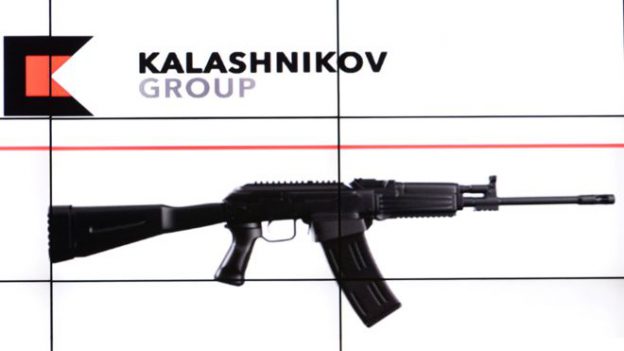
16th May 2025 admin Category :
Thu Sep 1, 2016
By David Dolan | JARABLUS, Syria
Flashing victory signs and firing in the air, the young rebels who took this Syrian town from Islamic State a week ago may be jubilant, but their ability to hold territory will hinge on Turkey’s appetite for keeping its forces inside Syria.
Sweeping in to Jarablus may have been the easy part. Backed by Turkish tanks, jets and special forces, Arab and Turkmen fighters under the loose banner of the Free Syrian Army (FSA) drove out Islamic State in a matter of hours last Wednesday.
It could prove more difficult for the rebels, who number only around 1,500 fighters, to push west and secure the 90 km (56-mile) stretch of Islamic State-held border territory that Ankara has touted as a potential buffer zone.
They face not only the challenge of displacing the ultra-hardline Islamist group but of preventing Kurdish militia fighters, backed by the United States but viewed as a hostile force by Turkey, from filling the void.
“Daesh and the Kurds are the same. Both of them brought these people to hunger,” said Fikret Ismail, a rebel fighter in his late 20s, using an Arabic name for Islamic State.
“We will fight for our land with our last blood,” he said, as he patrolled a street near the Jarablus town centre, brandishing a rifle and surrounded by a group of small children.
Turkey has revealed little about the strategy behind its first major incursion into Syria, beyond saying it wants to drive Islamic State and Kurdish fighters away from the border.
“Operation Euphrates Shield” has drawn criticism from NATO ally Washington, which has called on Turkey to avoid confrontation with Kurdish-aligned forces and stay focused instead on the joint battle against Islamic State.
The United States sees the Syrian Kurdish YPG as its strongest ally against the Sunni radicals. Turkey views them as a terrorist group and is worried that their advance in northern Syria will embolden a Kurdish insurgency at home. It has said no one can tell it which terrorist group it should fight.
On Thursday, the Turkish military said it had taken three more villages around 20 km (12 miles) west of Jarablus and hit 15 militant targets with howitzers and four more in air strikes. It gave no details on the targets, but the villages were in an area still held by Islamic State.
The British-based Syrian Observatory for Human Rights, a monitoring group, confirmed the takeover of 3 villages near the border.
COHERENT FORCE
Jarablus had been under Islamic State rule for three years and its black and white murals can still be seen on the walls. The town is slowly coming back to life. Women walk the streets, their faces uncovered. One man told Reuters one of his first acts when the group fled was to trim his beard.
A week after it helped drive out the jihadists, there is no sign of the Turkish military in Jarablus itself. Instead, the town was filled with the scruffy young rebels Ankara is backing, some driving their Toyota trucks, machine guns mounted in the back, at high speed through the streets.
Turkey’s aim is to turn the fractured Free Syrian Army into a coherent force as a counterweight to the Kurdish YPG, said Metin Gurcan, a former major in the Turkish military and an analyst for the Al Monitor journal. Which group gained control of al-Bab, a town to the south, would be critical, he said.
Al-Bab, held by Islamic State, lies on the southern edge of what Ankara sees as its potential buffer zone. Abu Muhammad al-Adnani, one of the ultra-hardline Islamist group’s most prominent leaders, is thought to have been killed in a U.S. air strike there this week.
“You have two forces who are very eager, highly motivated, to capture al-Bab. At the end of the day, this serves the strategic interests of the U.S., which is prioritising the fight against ISIS,” Gurcan said.
Turkish-backed forces have also been advancing towards Manbij, a city around 30 km (20 miles) south of Jarablus that was captured last month from Islamic State by a U.S.-backed coalition that includes the YPG.
Ankara, which accuses the YPG of “ethnic cleansing” in northern Syria, has demanded that Kurdish fighters return to the east of the Euphrates river. Manbij, like Jarablus, is west of the river. Turkey has long said that a Kurdish presence west of the Euphrates is a “red line” it cannot abide.
Mohammed, a 16-year-old rebel in Jarablus who had been fighting with the FSA for just a month, told Reuters he was from Manbij and had no desire to fight the Kurds.
“Everything is destroyed in Manbij now,” he said, blaming the ruin on Islamic State.
BUFFER ZONE
Turkey has repeatedly lobbied for the creation of a “buffer zone” just inside Syria to help secure its border and create a protected area for displaced civilians. But the idea has failed to resonate with NATO allies, who see such a move as requiring a prolonged intervention and whose focus is on Islamic State.
Turkey has taken in nearly 3 million Syrian refugees since the start of its neighbor’s five-year war, and is under pressure from Europe to stem the flow of migrants trying to travel onwards illegally from its shores.
Ankara has been providing aid to tens of thousands of displaced civilians just inside Syria, effectively a step towards creating a de facto safe zone.
“In order to create a ‘buffer zone,’ Turkey would have to keep a significant force on the Syrian side of the border,” said James Stavridis, former NATO supreme commander and dean at the Fletcher School at Tufts University.
Such a strategy appeared immediately unlikely, he said, but added it could not be ruled out in the longer term.
“Turkey will have a set of unpalatable choices ahead of it having entered into serious military operations in Syria.”
Colonel Ahmad Osman, head of the Sultan Murad forces, one of the main Turkish-backed rebel groups, told Reuters last week that the priority was now to advance some 70 km westward to the town of Marea, long a frontline with Islamic State.
The next phase of their operation could take weeks or months, he said, and could require an increase in the number of rebel fighters from their current level of 1,200-1,500.
While they did not wish to fight Kurdish forces, they would do so if necessary, Osman said.
For Turkey, which has long called for the ouster of Syrian President Bashar al-Assad, containing advances by the Kurdish militia appears to have eclipsed all other concerns.
“The fundamental Turkish red line is not Assad,” Stavridis, the former NATO commander, said. “It is against the formation of a Kurdish state.”
(Additional reporting by Edmund Blair in Istanbul, Tom Perry and John Davison in Beirut; Writing by David Dolan and Nick Tattersall; editing by Anna Willard)







